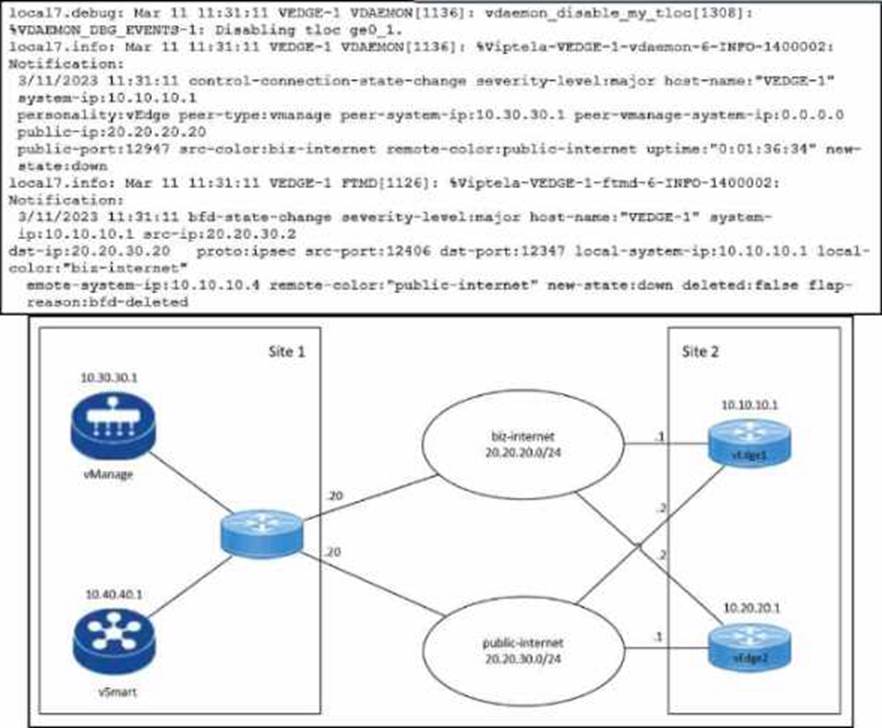What is the problem?
Refer to the exhibit.

Refer to the exhibits. An engineer troubleshoots a Cisco SD-WAN connectivity issue between an on-premises data center WAN Edge and a public cloud provider WAN Edge. The engineer discovers that BFD is Dapping on vEdge1.
What is the problem?
A . The remote Edge device BFD is down.
B . The remote Edge device failed to respond BFD keepalives.
C . The remote Edge device has a duplicate IP address.
D . The control plane deleted the BFD session.
Answer: B
Explanation:
BFD (Bidirectional Forwarding Detection) is a protocol that detects failures in the overlay tunnel between Cisco SD-WAN devices. BFD packets are sent and received periodically by each device to check the liveliness and quality of the connection. If a device does not receive a BFD packet from its peer within a specified timeout interval, it considers the peer to be unreachable and reports a BFD down event. This event triggers a control connection state change and a possible route change in the SD-WAN fabric.
In this scenario, the engineer discovers that BFD is flapping on vEdge1, which means that the BFD session between vEdge1 and the remote Edge device is going up and down repeatedly. This indicates
a connectivity issue between the two devices, such as network congestion, packet loss, or misconfiguration. The most likely cause of the problem is that the remote Edge device failed to respond BFD keepalives within the timeout interval, which resulted in a BFD timeout event on vEdge1. This event caused vEdge1 to mark the remote Edge device as down and notify the control plane. The control plane then tried to establish a new BFD session with the remote Edge device, which may have succeeded or failed depending on the network condition. This cycle of BFD session creation and deletion caused the BFD flapping on vEdge1.
The other options are less likely to be the cause of the problem. Option A is incorrect because if the remote Edge device BFD was down, vEdge1 would not receive any BFD packets from it and would not flap. Option C is incorrect because if the remote Edge device had a duplicate IP address, vEdge1 would not be able to establish a BFD session with it in the first place. Option D is incorrect because the control plane does not delete the BFD session unless there is a configuration change or a port-hop event on the device.
Reference: Bidirectional Forwarding Detection Flap-Reason Definitions on Cisco vEdge Routers, Cisco Catalyst SD-WAN BFD, Cisco SD WAN: BFD (Bidirectional Forwarding Detection)
Latest 300-440 Dumps Valid Version with 38 Q&As
Latest And Valid Q&A | Instant Download | Once Fail, Full Refund

